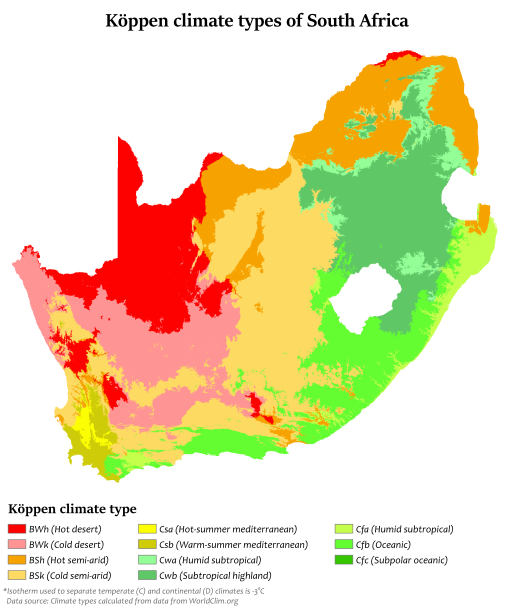Bantu Education and most South African government propaganda has claimed for many years that the country was "empty" when the first white people arrived.[fn value="*"]As a personal preference, I use "white people" and "black people" over the more common "whites" and "blacks", after all, we are human beings first, and skin colour is merely one way of differentiating between human beings. Referring to human beings as "blacks" or "whites" somehow undermines their humanity.[/fn]
It is true — as the South African government says — that the Bantu people migrated downward into the country from central Africa, but South Africa was by no means an unpeopled paradise which Europeans were the first to lay claim to.
When Portuguese explorer Bartholomew Diaz rounded what he called the "Cape of Storms" in 1487, the land to the North and East of Table Bay had been occupied for hundreds of years by the Khoikhoi, and for thousands of years by the San.[fn]Richard Elphick and Herman Giliomee, Editors, The Shaping of South African society, 1652-1840 (Wesleyan University Press, 1989), p. 3.[/fn] Archaeological evidence shows a San presence in the Cape as much as 30 000 years ago, with the Khoikhoi following later. The San and the Khoikhoi were the people referred to by white settlers as "Bushmen" and "Hottentots" and today are referred to by scholars under the name "Khoisan"
The Khoisan shared languages that were very similar — characterized by the distinctive "click" sound. What mainly distinguished the Khoikhoi from the San was that the former were pastoralists, herders of cattle who developed communities and political structures around this activity ; while the latter were hunter-gatherers, using bows and arrows to make a living off of the environment. There were not a large number of Khoisan — estimates place the number of Khoikhoi in the southwestern Cape at about 50 000 people. However, if one looks at a map of South African climatic conditions, one can see that a larger number would have severely taxed the resources of the little fertile land in the area.
Donald Denoon and Balam Nyeko, in their book Southern Africa since 1800, point out that the complexity of climatic and geographical variations in Southern Africa meant that cultivators and pastoralists had to be highly skilled in agricultural technique in order to survive. In the case of the San, a possibly higher level of expertise was needed to benefit from the hunting and fishing needed for survival.
When the Europeans began to make regular visits to South Africa in the 1590s, South Africa was inhabited by the following people:
- San
- Khoikhoi
- Bantu: These were agricultural specialists who occupied the land to the east and north-east of the Cape. Bantu people were primarily
- Nguni including the Xhosa and the Zulu while the
- Shona to the north formed the focus of the region's economy, being the prime consumers with crops, good pastures, and alluvial gold for external trade.
Interraction took place between all these communities as they were all mobile in some form or the other: the Nguni travelled to seek out seasonally enriched pastoral lands; the Khoisan travelled because they were nomadic hunters and pastoralists. As each of the communities was inherently specialized, a degree of cooperation was the norm, not total isolation.[fn]Donald Denoon and Balam Nyeko, Southern Africa since 1800 (Longman, 1984), pp. 1-13.[/fn]

